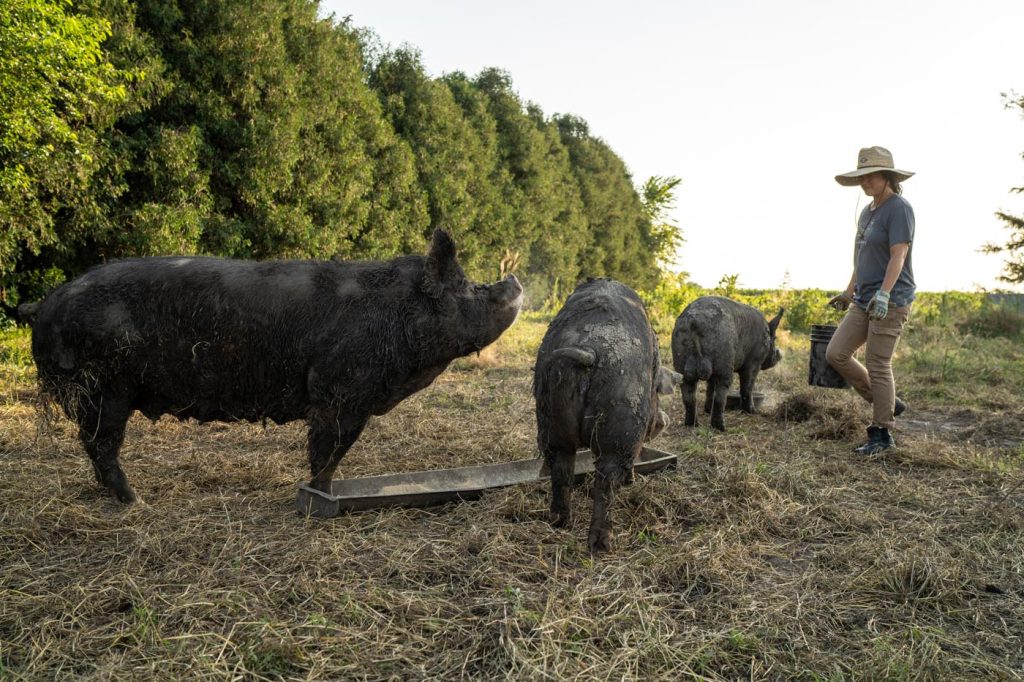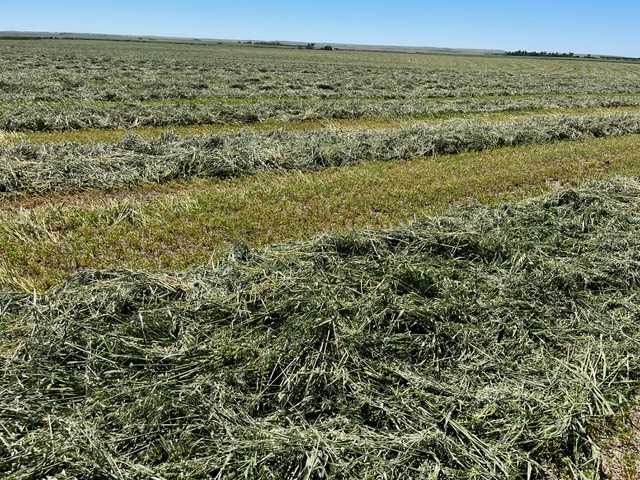Building on the success of their portfolio of funds supporting regenerative organic agriculture, Mad Capital has announced the launch of its Perennial Fund II (PFII) to provide farmers in the United States with tailored loans that help them transition to regenerative organic farmland, while also increasing farmer profits. PFII is targeting $50 million and is partway there. The Fund has already closed on and is actively deploying commitments from Builders Vision, The Rockefeller Foundation, the Schmidt Family Foundation, Zellis Family Foundation, Zarpet Family Foundation, Matthew Zell Family Foundation, Lacebark Investments, and nine other investors.
Agriculture is one of the leading drivers of climate change, and extractive farming practices – which are a defining characteristic of the industrial farming system that is predominant today – are causing biodiversity loss and soil degradation. Regenerative organic farmers can reverse this damage by working with nature, not against it, creating economically and ecologically resilient food systems. One study (in additional to many others) found organic fields to have 34% greater biodiversity and 50% greater profits than conventional sites. However, only 1% of farmland in the United States is certified organic – compared to almost 10% in the EU – significantly limiting the societal benefits of regenerative farming. Mad Capital seeks to address this with the launch of PFII.



Capital as a Barrier
Farming is capital intensive. Brandon Welch, co-founder and CEO of Mad Capital, explains that this is especially true for those transitioning the farm to organic and regenerative, as it takes a large investment of working capital to bridge the 36 months it takes to become certified organic. During this period, a farm may experience reduced yields, while still only receiving lower conventional prices at the market. This can put a farm’s operations 20-30% below breakeven on the transitional acres, while farmers are simultaneously extending financial and human capital to swap out their equipment lineup, learn a new agronomic system to manage weeds and produce consistent yield, and setting up new marketing channels for their products. Brandon describes it as, “similar to a semi-truck driver learning to pilot a cargo ship – the basic mechanics are the same but there are details that are wildly different, and those details are life or death of the farm.”
After this initial transition period, however, regenerative organic farmers can garner premium pricing for their products while cutting input costs, making it possible for them to not only be profitable but potentially be more profitable than they could be in a conventional system.
Anthony “Tony” Michaels, co-founder of EVEA Farm Management, echoes this potential. His operation manages over 12,000 acres – which had been under intensive conventional corn-bean production – in northwest Nebraska in 2022 and they have been transitioning to organic ever since. They started with alfalfa (an excellent nitrogen fixer) and will move to organic corn post-transition. The transition, he explains, is costly. The net investment in transition for row crops is $500-$1,000/acre (closer to $1,000 in their case) during the course of two seasons of transition. A good portion of this increased cost for Tony’s operation is in fertility. They aren’t just trying to feed a crop, he describes, they are adding extra fertility to feed the soil. In addition, the higher prices of alfalfa seeds ($100-$150/acre) also add to the establishment costs of regenerative production systems. Simultaneously, they just won’t make much money, especially in the first establishment year.
After the transition, however, they will have “earned the right to make a profit,” Tony tells us, quoting his well-known biological farming uncle Gary Zimmer. At this point they can expect $500-$1,000/acre in profit.
The transition process is an investment in the long-term success and regenerative production capability of the farm. Tony explains that you build up your soil health and the system around it so that “when you then go into your production rotation you have built the capacity to have a good yield at a good level of management with enduring weed control and healthy plants that can resist pests and fungal diseases.”
But this, he says is why capital support during transition is so critical. “We aren’t just messing around to lose money. This is a true net investment in the capacity to farm to a true, profitable organic farm.”

Rethinking Transition Finance with Perennial Fund II
As critical as that capital is for transition, today, a lack of access to capital can present a major hurdle for producers seeking to transition to regenerative organic systems. This is because traditional financing institutions are not designed to support the unique needs of regenerative organic farmers, as they often struggle to grasp the concept of an organic transition period (and the post-transition financials) or that these crops can command significant price premiums over conventional crops. As a result of this, Brandon explains, these financiers may apply massive discounts (-50%+) to organic prices or only run a 12-month financial projection that doesn’t account for the positive return on invested capital a farm benefits from on the other side of a regenerative organic transition.
Launched in 2019, Mad Capital has been actively lending to regenerative organic farmers for five years and with PFII, their second private credit fund, they offer a solution to this transition capital hurdle. Following on the first $10 million Perennial Fund, this new fund will provide regenerative organic farmers in the US with tailored loans to cover the full array of capital needs so they can transition to organic, invest in soil health, develop new markets, and diversify their enterprise.
PFII will be five times larger than its predecessor and expand in scope. The larger fund size will allow them to work with larger family farms – often making $1mm+ in gross farm income and operating on 2,000+ acres – and this time around they will offer funding for real estate, equipment, and infrastructure, in addition to the operating capital that they offered in Fund I. With PFII Mad Capital expects to bring their total financing to over 150,000 acres of farmland and partnerships with more than 50 farming families.
“Farmers must have the right capital partner in their corner that can show up and execute when there’s an opportunity to strike,” explains Brandon – something PFII is equipped to address.
For Tony, that flexibility – both in term duration and in working with others, was what made Mad Capital right for his operation when they needed capital to establish their regenerative operation. While Tony has a great local bank that offers operating loans for farmers, these offer an annual operating line and therefore are not ideal for a 2-3 year transition period. Mad Capital, however, can flex to fit Tony’s unique needs and they did. They created an intercreditor agreement with Tony’s local bank that meant Mad Capital provided a 5-year interest only loan that is then paid off as a term note, while Tony’s local bank does the annual operating line – covering the day-to-day cash flow needs of lending for the farm.
“It’s perfect,” says Tony of this financing. “It’s part of the conscious recognition that we did make an investment… not just over-run your operating loan,” he adds with a laugh.
The Investor Perspective
“We are aiming to build a bridge between two distant worlds that need one another to transition our food system – Wall Street and organic farmers,” Brandon explains of PFII. “Providing farmers with access to capital gives humanity a shot at producing an abundance of healthy food while being ecologically accountable to our working lands and those that steward them.”
The PFII approach will not only serve farmers across the Midwest but the $50 million fund will also aim to build a highly diversified pool of loan types and sizes to farms across the US to help hedge market and yield risk.
“We’re excited about Perennial Fund II and its potential to de-risk this space and open up capital market access more widely to farmers looking to transition their practices,” explains Sara Balawajder, Director, Investments at Builder’s Vision.
PFII will utilize an innovative blended structure with a first-loss pool to bolster the underlying performance of this quickly emerging sub-asset class within ag lending. It’s designed to generate impact forward and uncorrelated current yield within the core fixed-income allocation of a portfolio. Early indications from Mad Capital’s Perennial Fund I (PFI) portfolio show that this risk is further reduced within the niche of regenerative organic farmers due to the substantial increase in on-farm revenue from organic premiums.
Lessons for Continued Innovation
This latest launch of Perennial Fund II not only represents an opportunity to significantly increase acres under regenerative transition, but it also shows the continued iteration and innovation that is currently going into financing the beneficial societal impacts of regenerative agriculture today.
“Many hope there’s a quick fix to the massive degradation our food system is responsible for, but there isn’t,” Brandon explains. “It will take layer upon layer of efficiencies, innovations, and new ways of thinking to steer the ship of a regenerative organic revolution.”
He suggests that maybe we don’t need to reinvent the financial system to transform the food system. Instead, “We need more farmers and financiers working closely together to understand and manage the risk of a farm transition. This change takes time and education, but field by field, and farm by farm, the transition is taking hold. Risk can be real or perceived, and part of our role is closing the gap between what traditional ag financiers think are real risks and risks that are actually just perceptions.”
The Mad Capital team has seen that regenerative organic farms are more profitable, resilient, and ecologically accountable. “Data sets are popping up worldwide to showcase the benefits of this new yet ancient way of growing food, but it’s not substantial enough to unlock the hundreds of billions of dollars locked up in institutional capital markets,” Brandon says. But Perennial Fund II has an opportunity to get us one step closer.
Sarah Day Levesque is Managing Director at RFSI & Editor of RFSI News. She can be reached here.
